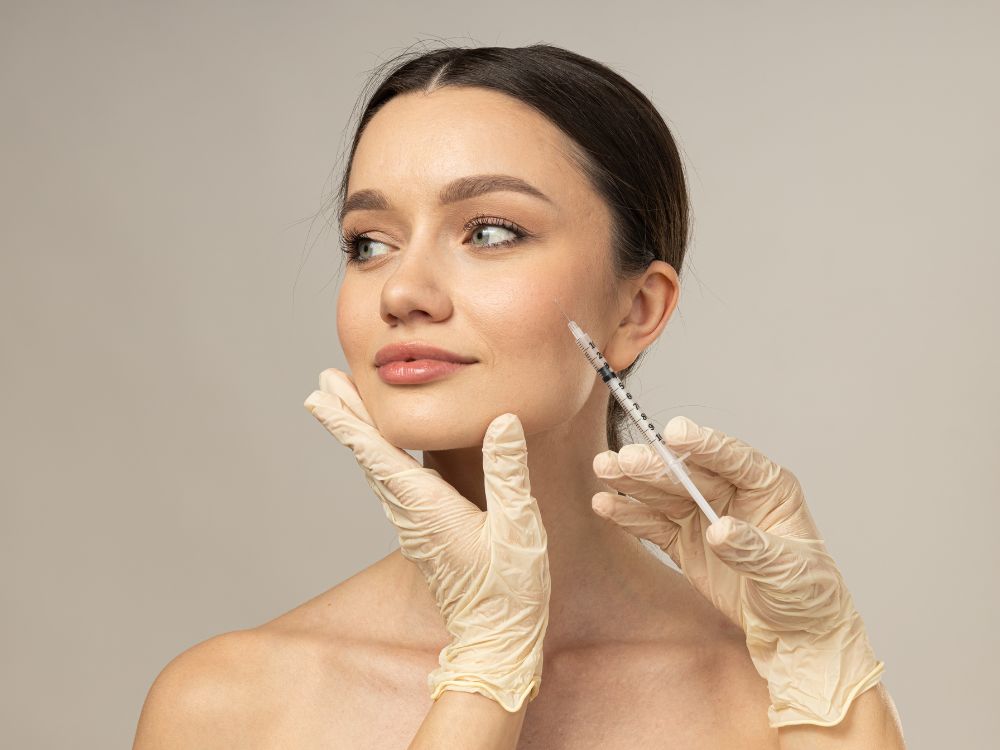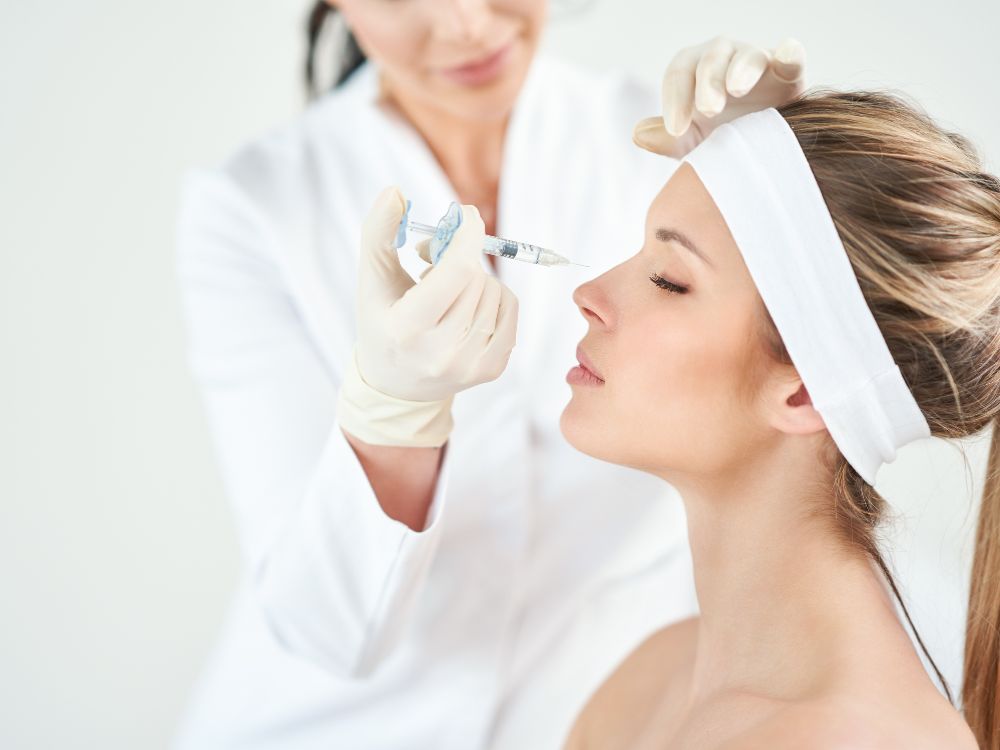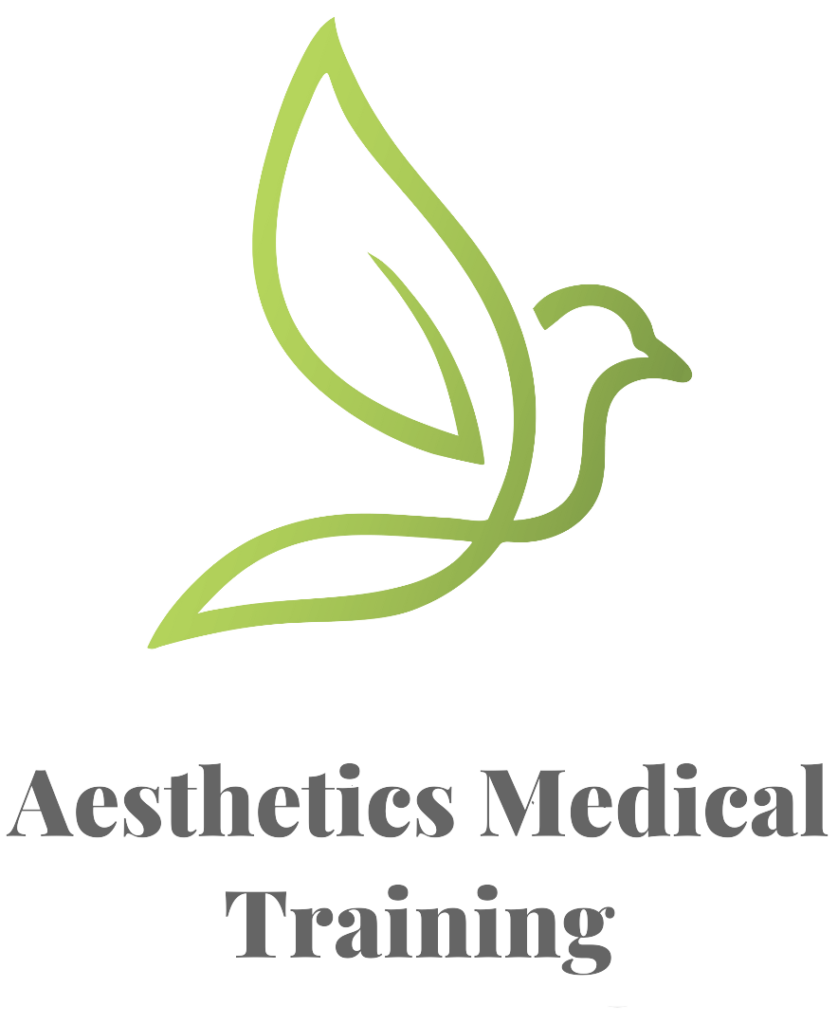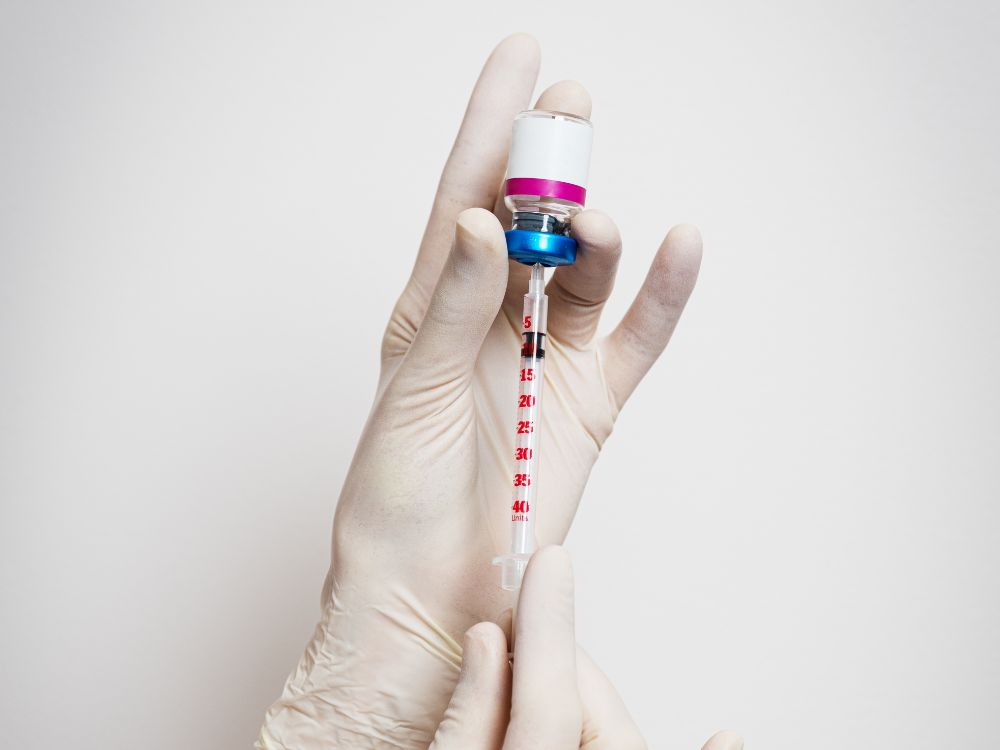In the ever-evolving field of aesthetic medicine, BOTOX remains a standout treatment, celebrated for its ability to smooth dynamic wrinkles and enhance facial aesthetics. Mastering the art of BOTOX injections is pivotal, not only for ensuring optimal patient satisfaction but also for advancing one’s career within the realm of aesthetic procedures.
This article is designed to be your comprehensive guide to refining your injection techniques, whether you are initiating your practice or looking to hone your existing skills. Here’s a glimpse of what you’ll discover:
- Understanding BOTOX and Its Functional Anatomy: Delve into the mechanics of botulinum toxin and its interaction with facial anatomy.
- Advanced Injection Techniques: Explore strategies to enhance precision in targeting complex muscles like the glabellar muscles and lateral orbicularis oculi.
- Safety Protocols and Compliance: Learn about the latest guidelines to maximize safety and minimize adverse effects.
- Expert Insights and Tips: Gain practical insights from leading practitioners in the field to avoid common pitfalls and enhance the efficacy of your technique.
Get ready to sharpen your skills, broaden your understanding, and confidently deliver results that speak volumes of your expertise. Let’s unlock the full potential of your practice with precision, safety, and a touch of artistry.
Exploring the Dynamics of BOTOX: From Concept to Cosmetic Masterpiece
BOTOX, or botulinum toxin type A, is a revolutionary drug known primarily for its ability to reduce the appearance of facial wrinkles. It operates by temporarily paralyzing muscles, which is achieved through the prevention of neurotransmitter release at the neuromuscular junctions. This inhibition of muscle contraction smooths dynamic wrinkles and can prevent the formation of static lines with repeated use. According to the U.S. Food and Drug Administration (FDA), BOTOX injections are both safe and effective when administered by a trained professional.

A Journey Through Time: The Evolution of BOTOX in Aesthetic Treatments
The history of BOTOX is as fascinating as its applications. Originally identified as a therapeutic tool for treating conditions like cervical dystonia and even urinary incontinence, its aesthetic potentials were serendipitously discovered in the late 1980s. Dr. Jean Carruthers, an ophthalmologist, observed that the botulinum toxin not only treated blepharospasm (eyelid spasms) but also smoothed glabellar lines between the eyebrows, leading to its widespread use in cosmetic procedures.
The Journal of Cosmetic and Laser Therapy reports a significant evolution in the usage of BOTOX over the years, from a clinical anomaly to a mainstay in cosmetic dermatology. It is now applied to various areas of the face, including the forehead, crow’s feet, and the glabellar region, with techniques becoming increasingly refined to enhance patient satisfaction and minimize adverse effects.
The aesthetic application of BOTOX has been detailed extensively in studies and trials, highlighting its safety and efficacy. Notable studies discuss the careful consideration of muscle depth and the target muscle’s functional anatomy to optimize the aesthetic outcomes and reduce the diffusion of the toxin to adjacent muscles.
In summary, BOTOX has transcended its original medical designation to become a staple in aesthetic medicine. Its ability to refine facial expressions and smooth wrinkles has made it indispensable in the arsenal of cosmetic procedures, continually adapting through clinical trials and research to meet the evolving standards of safety and patient care in aesthetic practices.
Mastering Essential BOTOX Injection Techniques: A Comprehensive Guide
Precision in BOTOX injection techniques is critical, not only to achieve the desired cosmetic outcomes but also to ensure patient safety and satisfaction. This section dives into the essentials of BOTOX application, from preparation to advanced methods, ensuring practitioners can elevate their skills effectively.
Preparation: Laying the Groundwork for Success
Before the needle ever touches the skin, a series of critical steps must be taken to ensure the effectiveness and safety of BOTOX injections:
- Understanding Facial Anatomy: The accurate identification of target muscles, such as the corrugator supercilii for glabellar lines or the orbicularis oculi for crow’s feet, is essential. This understanding helps in delivering BOTOX precisely where it’s needed to optimize the aesthetic outcome while minimizing the risk of diffusion to adjacent muscles.
- Selecting the Right Product: Not all formulations of botulinum toxin are the same. The choice between different brands (such as BOTOX Cosmetic, Dysport, or Xeomin) may affect the dosage, diffusion, and duration of the effect. Each product may offer specific advantages, depending on the treatment area and desired results.
- Preparing the Patient: Patient preparation involves not only the physical aspects, such as cleaning the injection site with normal saline but also addressing patient concerns and managing expectations.
Technique Basics: Injection Patterns and Practices
- Forehead and Eyebrows: For treating horizontal forehead lines, the frontalis muscle must be approached with care to avoid drooping and asymmetry. It is very important to adjust injection depths and amounts, especially when targeting the delicate balance needed to maintain natural eyebrow positions.
- Eyes: Techniques for the areas around the eyes must be finely tuned to address finer lines without affecting the sensitive muscles controlling eyelid movement. Targeting the lateral orbicularis oculi muscles requires a light hand and precision to smooth wrinkles effectively without impacting the natural eye closure.
- Mouth: Perioral lines and marionette lines require injections that are shallow and strategically placed to avoid over-weakening the muscles needed for expressions and functions such as speaking and eating.
Advanced Techniques: Beyond the Basics
- Neck and Lower Face: Advanced BOTOX applications can involve the platysma bands of the neck or the lower face areas to contour the jawline and reduce the appearance of neck creases. These areas require an advanced understanding of muscle interactions to ensure that the results are enhancing rather than impairing natural movements.
- Tailoring to Individual Facial Structures: Each face is unique, and so should be the approach to BOTOX injections. Customizing techniques to align with individual anatomical differences ensures better outcomes and higher patient satisfaction. Adjusting for factors such as muscle strength, previous BOTOX usage, and facial asymmetry can significantly enhance results.
Curious to find out more about Botox injection training? Check out Precision and Practice: The Essentials of Botox Injector Training.
Whether you are smoothing forehead wrinkles or enhancing facial contours, the precision with which you apply BOTOX can define your success in this highly competitive field. A well-informed approach that integrates a deep understanding of anatomy, careful product selection, and meticulous technique will keep both new and returning clients satisfied with their rejuvenated appearance.

Ensuring Safety and Compliance in BOTOX Procedures
Adhering to stringent safety standards is not only a professional obligation but also a key factor in preventing complications and ensuring patient satisfaction.
Navigating Regulatory Guidelines for BOTOX Administration
The administration of BOTOX is heavily regulated to safeguard both the practitioner and patient. These regulations, outlined by bodies such as the FDA and equivalent authorities globally, ensure that only qualified healthcare professionals perform BOTOX injections.
- Training and Certification: Clinicians must undergo specific training and achieve certification in BOTOX administration. This education focuses on understanding the functional anatomy of facial muscles, proper injection techniques, and the pharmacology of botulinum toxin type A.
- Product Handling and Usage: The FDA mandates that BOTOX must be stored and handled according to strict guidelines to maintain its efficacy and safety. The reconstitution of the toxin, typically with sterile normal saline, must be done under aseptic conditions to prevent contamination and ensure optimal results.
- Patient Assessment and Preparation: Before any BOTOX procedure, a thorough patient assessment is essential. This includes a detailed medical history to rule out any conditions that may contraindicate the use of BOTOX, such as certain neurological disorders or allergies to botulinum toxin components. Practitioners also need to educate patients about the procedure, possible side effects, and post-treatment care to manage expectations and enhance patient-reported outcomes.
Standardizing Injection Techniques to Minimize Risks
The technique employed during the injection of botulinum toxin significantly influences the safety and efficacy of the procedure. For instance, precise knowledge of muscle depth and location is crucial to avoid unintended toxin diffusion to adjacent muscles, which can lead to complications like muscle weakness or drooping.
- Documented Techniques: The standardized injection patterns for areas such as the forehead, crow’s feet, and glabellar lines are critical for avoiding adverse events. The injection should be placed at a specific depth and angle to target only the intended muscles.
- Customization Based on Anatomy: Each patient’s facial anatomy is unique, necessitating adjustments in the injection technique to accommodate individual variations. The positioning of injections, especially around sensitive areas like the eyes and eyebrows, must be meticulously planned to maintain natural facial expressions and avoid affecting the muscle’s functionality adversely.
Ongoing Monitoring and Reporting of Adverse Events
Continual monitoring of patients after BOTOX treatments is essential for early detection and management of any adverse effects. Healthcare professionals are encouraged to report all adverse events to regulatory authorities to help refine the safety profiles of cosmetic procedures.
In conclusion, the meticulous adherence to safety standards and regulatory guidelines is indispensable in the practice of administering BOTOX. These protocols are designed not only to safeguard patient health but also to uphold the reputation and effectiveness of aesthetic treatments in the long run.
Expert Tips and Tricks for Mastering BOTOX Injections
In the nuanced world of aesthetic medicine, the expertise of seasoned practitioners is invaluable. These professionals, who have refined their BOTOX injection techniques through years of practice and continuous learning, offer a wealth of knowledge that can significantly improve outcomes and patient satisfaction.
Avoiding Common Pitfalls in BOTOX Administration
Even the most skilled practitioners can encounter challenges in BOTOX applications. Here are some expert insights on common pitfalls and how to avoid them:
- Over-treatment: One of the most frequent mistakes in BOTOX injections is over-treatment, leading to an unnatural appearance. Careful dosing, especially in dynamic areas like the forehead and around the eyes, is crucial.
- Incorrect Muscle Targeting: Misidentifying the muscles to inject can result in ineffective results and dissatisfaction. A deep understanding of facial anatomy is essential.
- Managing Patient Expectations: Discussing what BOTOX can and cannot do is vital to ensure patient satisfaction. Detailed pre-treatment consultations help align expectations and lead to higher satisfaction rates.
- Adverse Reactions: Although rare, adverse reactions can occur. Timely identification and management are key. Practitioners should educate patients about possible side effects like mild bruising or temporary muscle weakness, and provide clear instructions on what to do if these occur.
- Technique Refinement: Consistent technique is crucial for achieving desired results. Techniques like the “five-point injection” for the glabellar complex or “micro-droplet technique” on the crow’s feet area are examples of precision methods that help achieve smoother, more consistent outcomes.
Have you decided to become a Botox injector? You’ll want to read this: Fine Lines to Fine Careers: How to Become a Botox Injector.
By adhering to these expert tips and continuously engaging in professional development, practitioners can enhance their BOTOX injection skills, leading to better patient outcomes and further solidifying their reputation in the competitive field of aesthetic medicine.

Embracing Continuous Learning in Aesthetic Medicine
The landscape of techniques, products, and safety regulations is constantly shifting, and staying abreast of these changes can significantly enhance the efficacy and safety of treatments. Practitioners who engage in ongoing education are less likely to encounter complications and more likely to achieve superior patient outcomes.
Resources for Further Education and Training
Several platforms and resources are available for aesthetic professionals looking to enhance their expertise in BOTOX injections:
- Professional Workshops and Seminars: Leading experts in the field often host workshops that focus on advanced BOTOX techniques and new application areas such as the treatment of the lower face and neck.
- Certification Programs: Many esteemed institutions offer certification programs in BOTOX administration. These programs typically cover everything from basic injection techniques to complex considerations like the diffusion of toxin and muscle depth.
- Online Courses and Webinars: With the rise of digital learning platforms, many reputable organizations offer online courses that cover both fundamental and advanced BOTOX procedures.
- Peer-Reviewed Journals and Publications: Subscribing to journals such as Clin Dermatol or Facial Plast Surg can keep practitioners informed about the latest research findings, clinical trials, and expert opinions on BOTOX and other aesthetic treatments.
Leveraging Technology for Better Learning Outcomes
Technological advancements have also made it easier to understand complex anatomical details and injection techniques through augmented reality (AR) and virtual reality (VR) simulations. These tools allow for a deeper understanding of muscle movements and toxin effects, providing a safe environment to practice and refine techniques without patient risk.
In conclusion, the commitment to continuous education in the field of aesthetic medicine not only enhances the practitioner’s skills but also ensures that patients receive the safest, most effective treatments available.
Learn from the Best: Aesthetics Medical Training
At the forefront of aesthetic education, our online school embodies a steadfast commitment to excellence and accessibility. Designed for aspiring and seasoned practitioners alike, our programs offer a deep dive into the aesthetic techniques and procedures that shape today’s beauty standards.
- Curated Courses Offered: Our course offerings are meticulously crafted to provide comprehensive training in BOTOX injections, laser therapy, and dermal fillers.
- Seamless Learning Experience: We understand that our students have diverse needs and schedules. Our online platform offers unmatched flexibility, allowing students to learn at their own pace and from anywhere in the world.
- Certification and Career Opportunities: Graduating from our school means more than just completing a course—it paves the way for a thriving career in medical aesthetics.
- Flexible Payment Plans: Thanks to our partnerships with leading financial institutions, we offer flexible payment plans that make our courses accessible to a wider audience.
Aesthetics Medical Training is not just a learning platform—it’s a gateway to the future of aesthetic medicine. With state-of-the-art training modules, expert faculty, and flexible learning options, we equip our students with the skills, knowledge, and credentials needed to excel in this dynamic industry. Enroll with us, and transform your passion for beauty into a rewarding professional journey.

